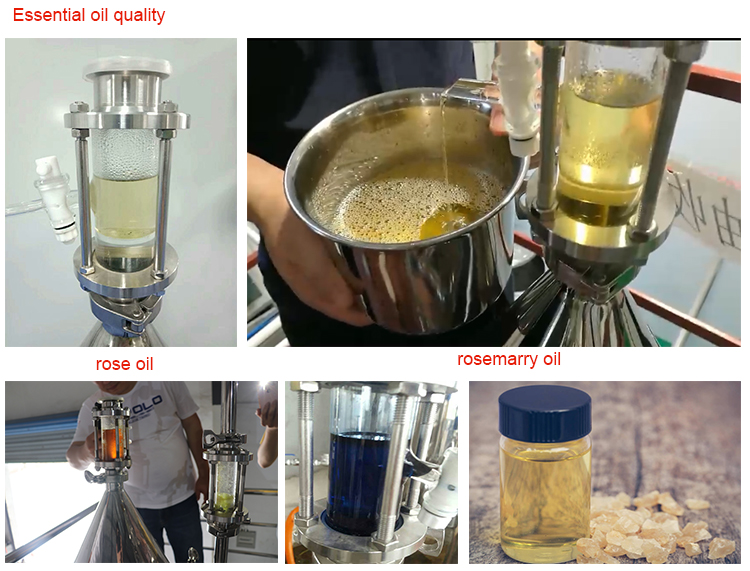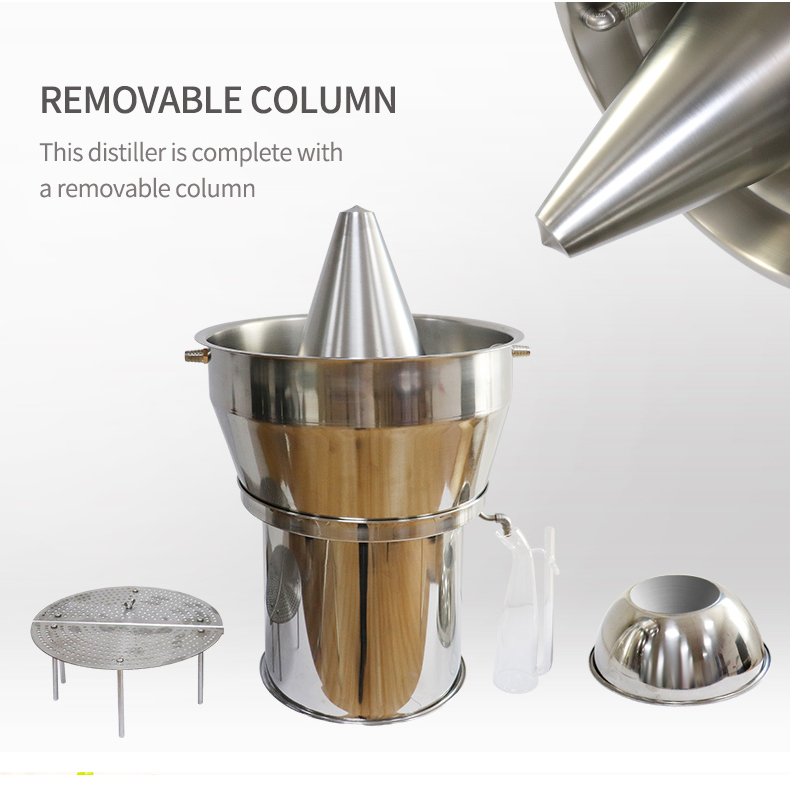Distillation is the main method for extracting essential oils from plants. About 90% of essential oils are extracted using this method. In fact, according to many medical books, distillation is the only method for extracting essential oils—the ones obtained by other methods are called essence or original essence.
The earliest inventor of the distillation method was Avicenna, who distilled rose essential oil for the first time. However, the distillation method already existed before him, but he summed up the experience of others and improved it better. In the distillation method, the plant tissue must be heated. There are two heating methods: put the plant tissue in water and then heat the water to a boil, or put the plant tissue on a rack or a net and heat the water under the plant. The steam passes through the plant tissue. Leaves, branches, berries, petals, and other plant tissues can all be distilled. The method of putting plant tissues in water is called direct distillation, and the other method, letting steam pass through plant tissues on a grid, is called steam distillation.
Both of these distillation methods can rupture the cell walls of plant cells and release the essence stored in the cells in the state of steam. This refined steam will mix with water vapor, enter a cooling tube together, then return to a liquid state, and finally be collected in a larger bottle. Water vapor will condense into water, and essence will condense into essential oil. Essential oils are lighter than water, so they can be easily separated and collected from the water layer. Some water layers also have high value and can be sold under the name “pure dew” or “herbal water”. The French call these distillates “hydrosols.”


There are one or two kinds of plants. The essential oils extracted by distillation are not obvious. Instead, they turn rose pure dew into orange blossom pure dew, the so-called by-product. At this time, the adsorption method or solvent extraction method can be used to extract the essence in these by-products, and it can also be used to extract the essence contained in the detailed petal tissue.
At the latest in the tenth century, the technology of distillation has been very sophisticated, and people already know the use of distillation to extract essential oils. The birthplace of the distillation technique may be Persia: at that time people used these essential oils as perfumes (Arab Shatubian perfume). However, archaeologists recently dug up some distillers in Italy. These antiquities prove that the Romans knew the technique of distillation for a long time, and the Persians improved their technique.
In areas with relatively backward technology and European countryside where essential oils are produced on a small scale, the distillation equipment used now is similar to before. In areas where essential oils are produced on a large scale, people have made distillation devices larger and more complex, but the basic principles are still the same. Modern instruments are mostly made of stainless steel to avoid contamination of the pure substances distilled out and to obtain better quality essential oils.
Whether it can produce high-quality essential oils suitable for aromatherapy is closely related to distillation technology. Factors such as distillation temperature and distillation time are closely related to the quality of essential oils.

